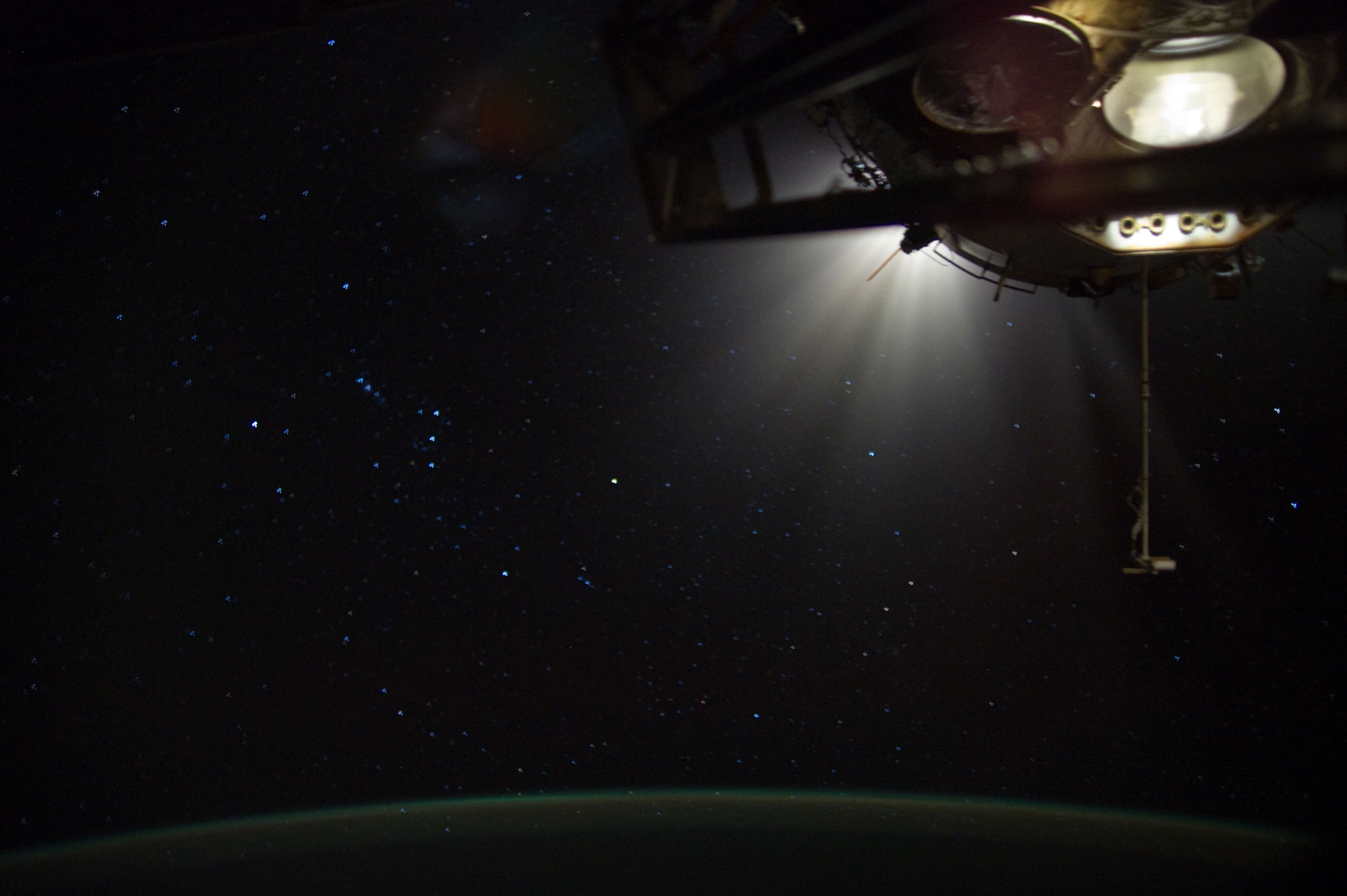[/caption]
Astronaut Don Pettit posted this beautiful image on his Google+ page showing a view from the space station reminiscent of science-fiction. Of course, that’s the constellation Orion off in the distance, but there’s a bit of a debate going on at Pettit’s post whether the diffusion of light seen emanating from the ISS is just light from inside the space station windows (it appears to be the Cupola) spreading out into total darkness, or if the effect is actually from a reboost of the ISS for a Debris Avoidance Maneuver that was performed around the time this image was taken.
The only clue Pettit provided is the title he gave the image, “Orion in the headlights,” which would point to the effect coming from the light shining from the Cupola windows. But the The DAM took place at 10.12 GMT (5:12 a.m. EST) on February 29, 2012 and as commenter Peter Caltner points out, “the scenic lighting effect ends exactly in [the series of images that Pettit took] at the end of the 76 seconds of the burn duration.”
The original can be found here on the NASA Gateway to Astronaut Photography website, and here’s another image in the sequence.
OK, all you imaging experts out there: until Pettit gives us the real scoop, what are your thoughts?
Thanks to Elyse David for the heads up!


The ISS partially blocking light from the Moon?
That is about the right location for the moon on the night of Feb 29, right next to Aldebaran in Taurus.
I asked a similar question directly on G+ and got smacked down for it.
When you see “rays” or “beams” of light on Earth, it’s because the light is reflecting off of or being absorbed by molecules in the sky, be they air, dust, ice, water vapor, or something else.
What is causing these “rays” to be visible in the vacuum of space? If you look at the moon directly from the ISS with no obstructions, does it have rays? If not, why would they be there just because the moon is behind the ISS?
Light should not diffuse as such in the vacuum of space. Particles ejected by the thrusters near the station could provide the necessary environment for the light to be defused. This doesn’t solve the problem of the light source… Cupola, Trusters or Moon ? I don’t think trusters nor Coupola provide enough light, i would therefore go for light from the Moon.
Moonlight scattering off the thruster exchaust.
Probably, it is because of the moon…
The window in question is in fact the large observation window in the Russian Zvezda Service Module. The photo was taken from the Pirs module looking toward the aft end of the Service Module, where the reboost engines are located. Thus, this photo does indeed show a thruster plume from an ISS reboost.